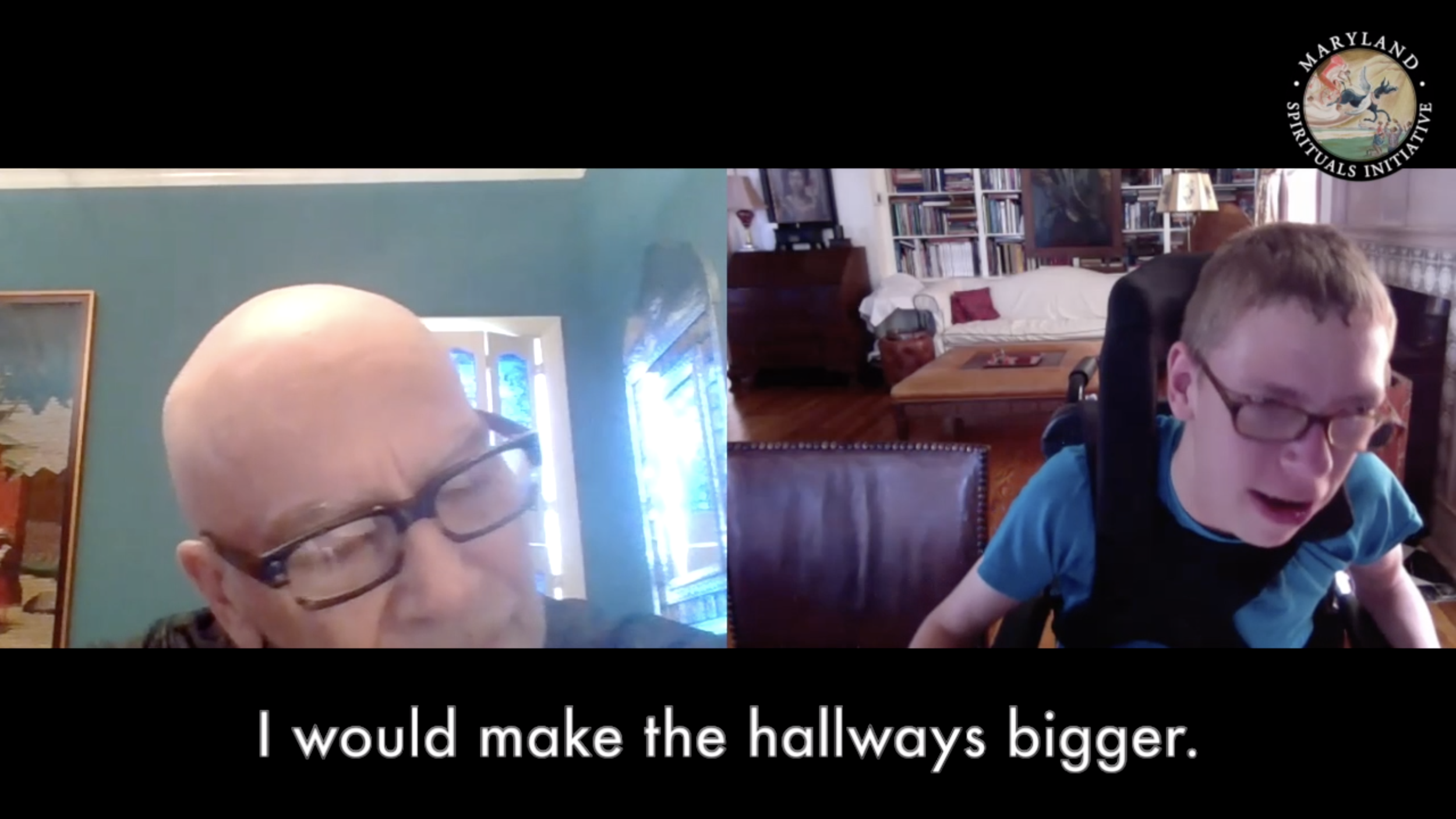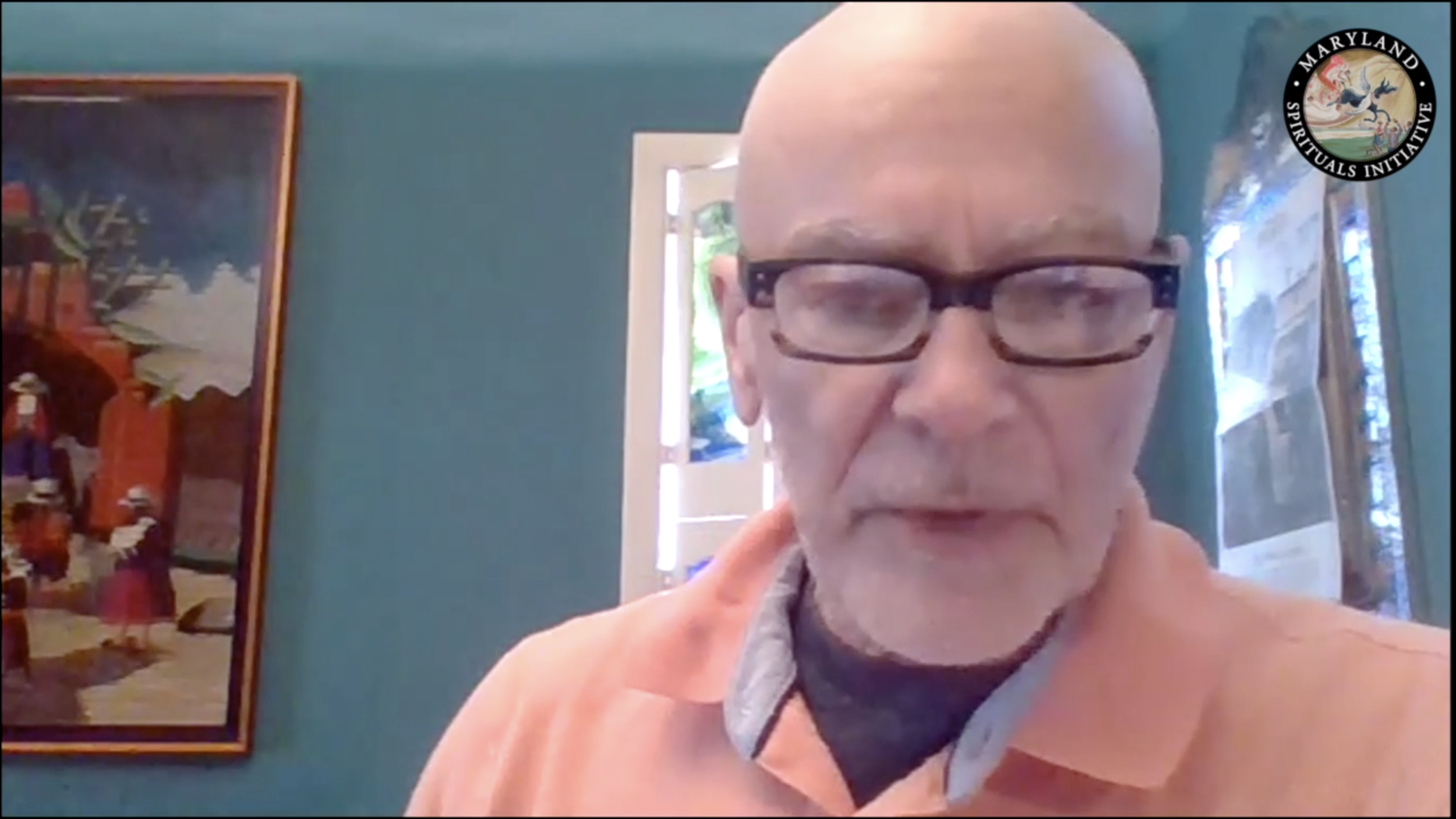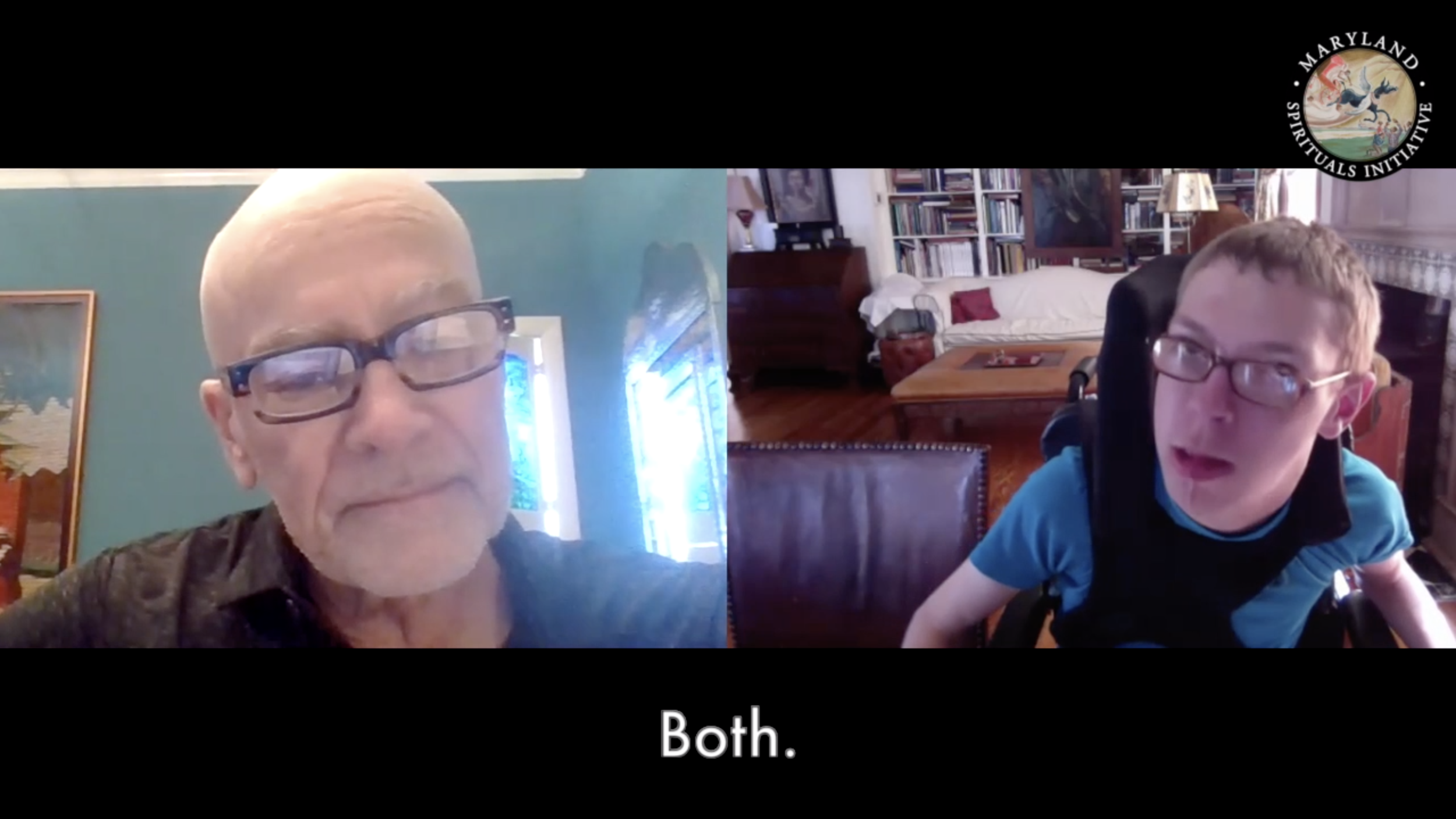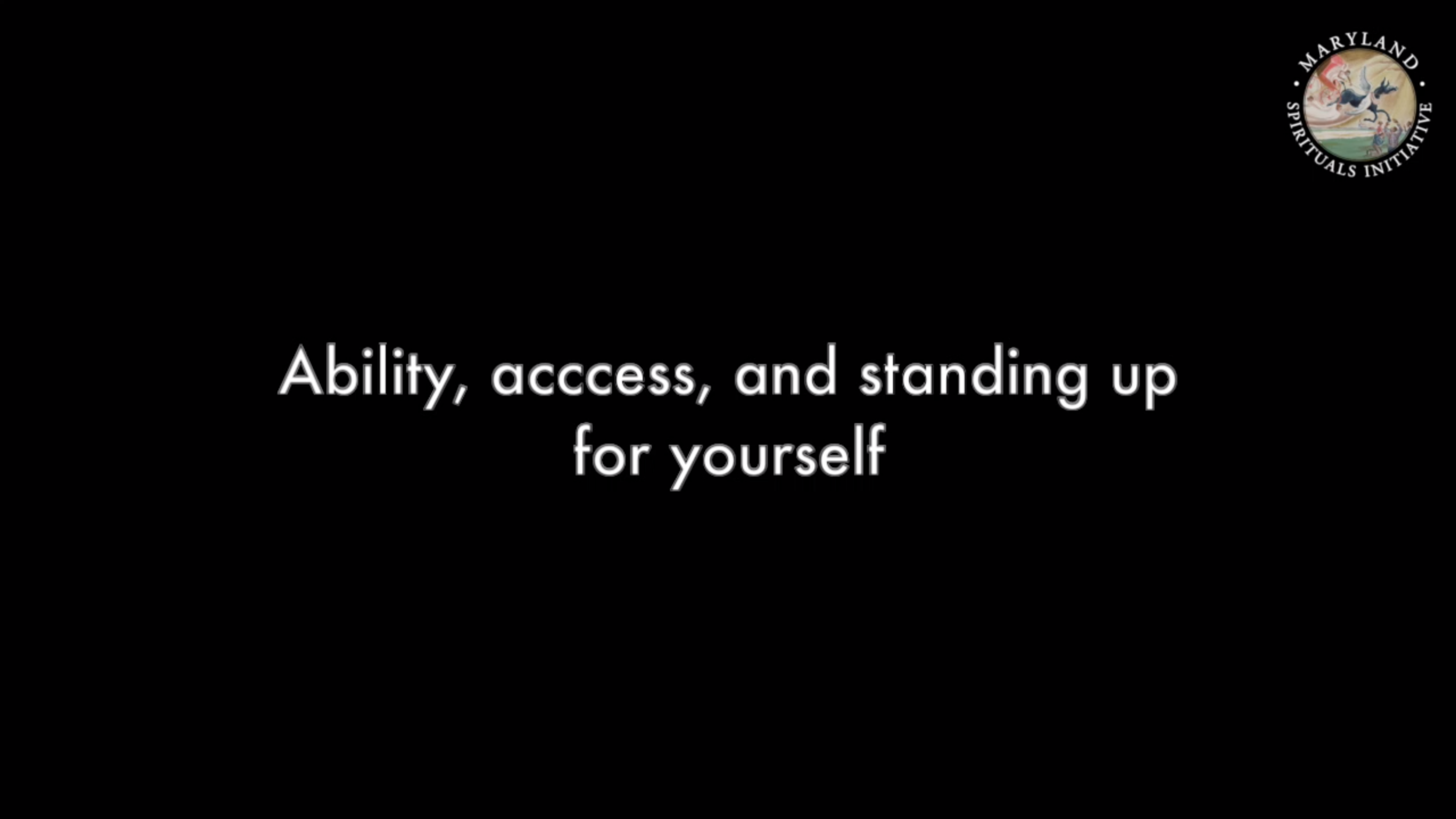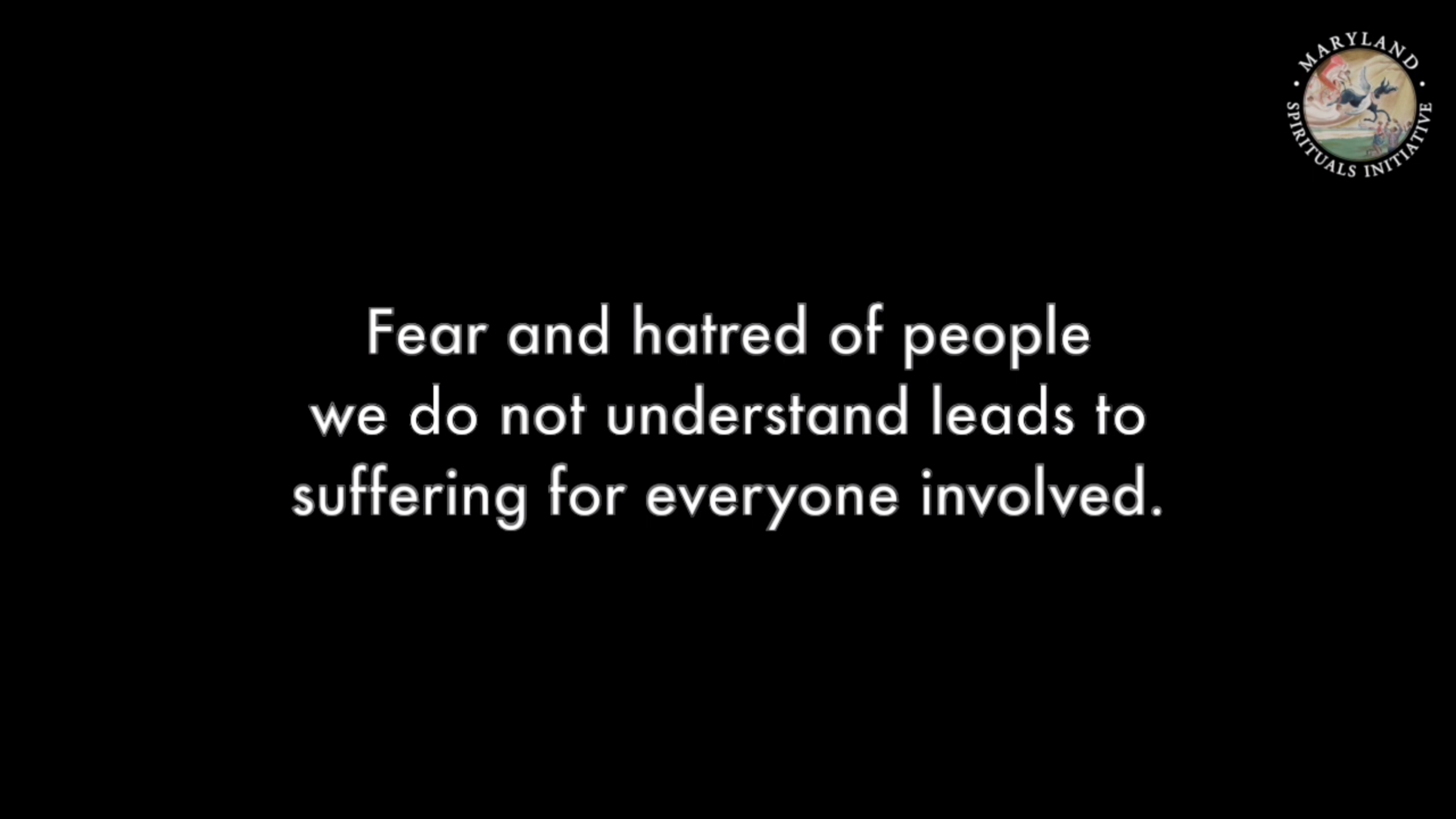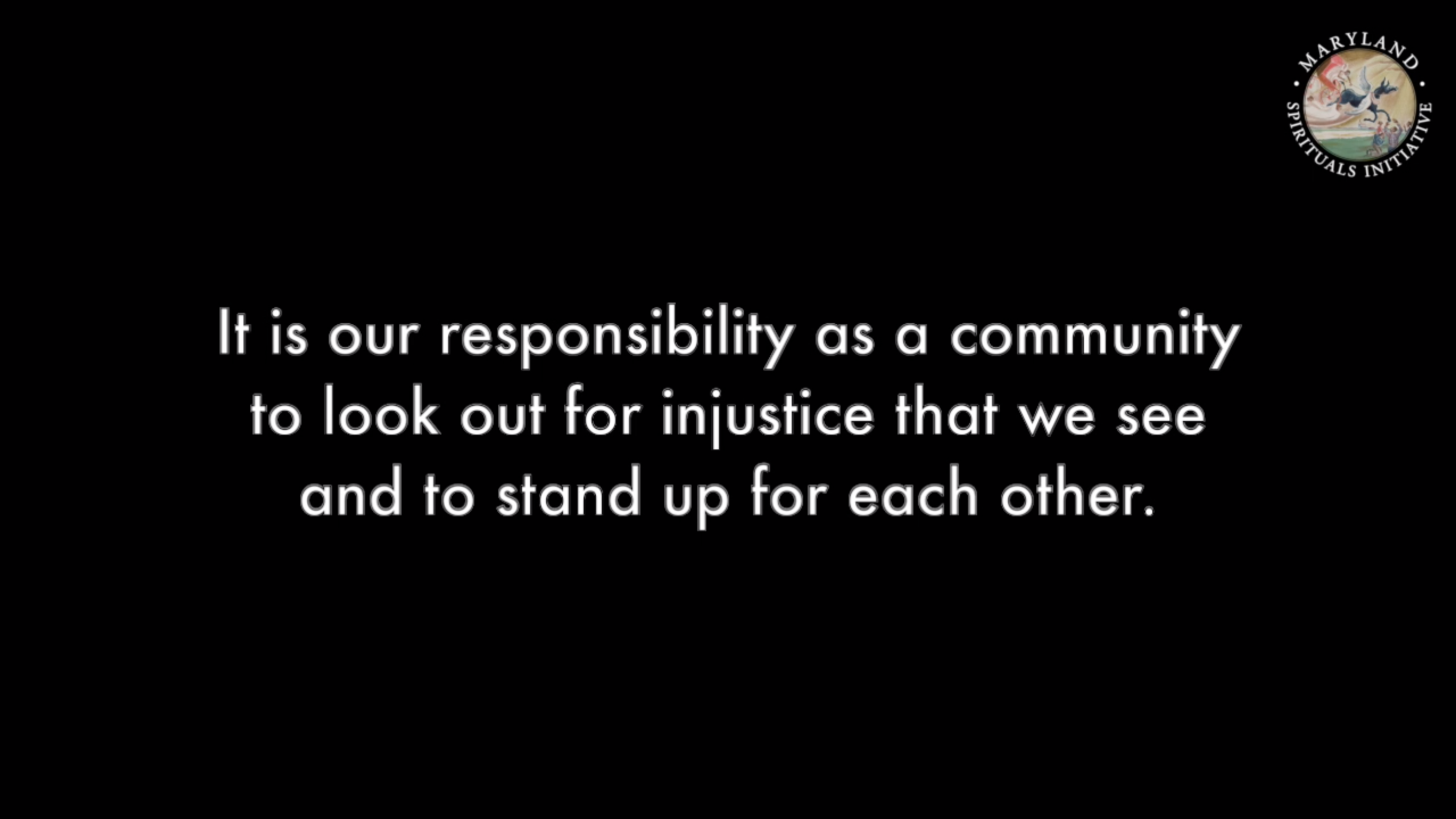Accessibility as a Civil Right:
Finding Nature at the Ward Museum of Wildfowl Art, Salisbury, Maryland
Wheelchair user Tilghman Paca Logan and special educator Bruce Nelson Glover meet with Ward Museum of Wildfowl Art director, Dr. Kristin Sullivan for a fascinating exchange at a leading museum in the principle that Accessibility is a Civil Right.
Join Tilghman and Bruce in this three part video discussion about Mobility in Museums, Environmental Studies and Migration on the Eastern Shore, and Accessibility is a Civil Right.
Part One: Mobility in Museums
Summary
In his tour, Tilghman shares with Kristin and Bruce what it feels like to view art from the perspective of a person who uses a wheelchair. This is his first visit to a museum in a power chair, and he describes the sense of independence he experiences in driving on his own in a thoughtfully planned out museum that has given great consideration to persons with disabilities.
Tilghman has been visiting the Ward Museum for many years.
We know that the Ward is one of your favorite museums, but what makes it so special to you?
Tilghman describes how his experience at the Ward Museum is special because he can move around easily. The physical layout of the galleries is accessible for Tilghman in his motorized wheelchair.
“I want to do this from now on,” Tilghman says with regard to moving using his motorized chair.
Today was your first time independently maneuvering through the exhibits in your motorized chair.
Did that independence make your experience more meaningful? How so?
Moving around is much easier for Tilghman in his motorized chair. With the ability to control his movement in the chair, he independently gets to experience art how he chooses to, viewing each piece for as long as he wants. The new chair is also allows Tilghman to see the art much higher.
Our host today, the Executive Director of the Ward, Dr. Kristin Sullivan, was so gracious and giving of her time. Is there anything you would like to say to her about the visit?
Thank you! Tilghman says that if his classmates and friends were to visit him in Maryland, he would take them to the Ward Museum.
Let’s talk more about accessibility and personalization in museums.
Personalization in museums is creating a personal experience for each individual that allows them to enjoy art to their utmost ability. Some museums give people devices, where they can control things like lighting that help them see the art more clearly.
Personalization has to do with a persons appreciation of art and being able to access the art along with everyone else.
Any other suggestions to the museum for navigating inclusivity?
Make the hallways bigger and the doorways.
Tilghman gives advice about making ramps better for those in motorized wheelchairs.
A message from Bruce about self-advocacy: Bruce shares the story of some students in wheelchairs, who advocated for themselves by writing letters to the school administration. Ultimately their college accommodated for their needs.
Sometimes it takes things like marches, telephone calls, and other techniques of self-advocacy to gain access to basic needs that other people have.
Part Two: Environmental Studies and Migration on the Eastern Shore
Summary
Part Two of Accessibility as a Civil Right includes a discussion about environmental studies and migration on the Eastern Shore of Maryland. Bruce gives Tilghman a lesson on the wetlands landscape of the Eastern Shore, and how this ultimately led to the art of decoy carving. As a person with disabilities who relies on a wheelchair for mobility with limited access to boardwalks and other parks, Tilghman has a unique opportunity to learn about the physical environment through the Ward Museum of Waterfowl Art.
Do you see the Ward Museum as entertaining or educational? Or both? Why?
Tilghman says, “Both” because “there’s a lot of rooms.” There many areas that are accessible to him, with all art placed at heights that he can easily see. Tilghman enjoys being able to roll around in the open spaces, something that is not available to him at all museums.
Which exhibit in the museum is your favorite?
The Nature Photos?
The Decoy Carvings?
The Modern Art Exhibit?
The Recreation of the Ward Brothers’ studio/workshop?
What makes it your favorite?
Tilghman enjoys the Modern Art Exhibit. He generally loves Modern Art, but his favorite artist is Matisse.
Why do some birds and animals migrate?
The weather. When it snows, it is harder for birds to find food, so they migrate towards the warmer southern hemisphere where they’ll find food.
There are two main reasons why birds might stop over on the Eastern Shore. Why would they stop here?
The wetlands of the Eastern Shore feature shallow waters, which harbors several thousands of species of different animals. This makes it an ideal spot for birds to find food. The landscape also provides a good place for birds to rest and hide from predators. It is a perfect stop over in their long journey from the north.
We are surrounded by water here on the Eastern Shore. How did all of that water and the resulting marshy environment lead to the art of decoy carving?
To put in the water to fool the ducks. Hunters began shooting the birds on the Eastern Shore because ducks and geese make a delicious dinner. With decoys in the water, other ducks be attracted to the spot, knowing that it is safe to be there. Initially they were more crude, and over the years, the duck decoys developed.
One technological advancement was that a piece of lead was nailed into the bottom of the duck decoys. This was used to make sure the decoy stays level, floating on the water.
Because it is unlikely that Tilghman will spend time in a goose blind, the Ward Museum is a wonderful substitute.
People who experience disabilities tend to be deprived of time in the natural world. This happens for many reasons: safety, access. and the sacrifices of economic inequality.
In admitting that there is a problem, and dealing with it, The Ward Museum of Waterfowl Art becomes a model for larger museum institutions in Maryland and throughout the U.S.
In rewriting their mission statement, The Ward Museum is acknowledging this disparity, and addressing it directly to provide for inclusion.
Part Three: Accessibility is a Civil Right
Summary
Bruce and Justine discuss the concept of accessibility as a civil right with Tilghman. Tilghman gets a lesson about forms of resistance available to different oppressed groups. Bruce shares his own story with Tilghman about self-advocacy.
If YOU were the director of the Ward, Dr. Tilghman Logan, what would YOU do to connect to ALL members of the community?
Tilghman would make a video in order to reach other people who may not be able to get to the Ward Museum. Remote sharing has been valuable during the COVID-19 global pandemic, and is a tool Tilghman has generously been using.
How would you make the video accessible to others?
The video would be made accessible by putting it on the computer for internet sharing. Tilghman has been very involved in the making of all Maryland Spirituals Videos, and we remain open to all suggestions for prioritizing accessibility to all persons.
Ability, access, and standing up for yourself:
“It’s important to keep in mind, Tilghman, that everyone has their own abilities and limitations and things that they are able to do and not able to do. It’s everyone; it’s just to what degree. You have to accept that and demand that you have the same rights and access as everyone else. I’ve faced discrimination in my time of a different sort, but it’s not a nice thing and it’s not very much fun. It happens even today. You have to be on the lookout for it and stand up for your rights and demand your rights.”
- Bruce Glover
Defining self-advocacy:
Self-advocacy is expressing yourself through whatever means so that you can have equal rights and equal access to everything. Sometimes people throughout history don’t do that for you. You have to do it yourself, as numerous individuals have done throughout history.
Defining oppression:
The dictionary definition of oppression means unjust treatment. Oppression can happen in many forms to many different kinds of groups.
It is about people wanting to be in a position of power over other people, to exploit people. There are all sorts of oppression in all levels — it can involve a whole country, oppressed by a cruel leader. It’s just someone in power, keeping other people down. Restrictions on you and your freedom, forcing you to do something you don’t want to do, taking away your will.
In 1995, Bruce sued the Williamsburg (Ohio) Board of Education for discrimination. Bruce describes that gossip is what led to the legal trouble he had. Bruce’s student lied to his parent about an incident at a Christmas party, which ultimately led to his firing by the school’s principal. Bruce was discriminated against based on a lie and discrimination. Bruce had the need and the means and the people backing him to fight it.
You have to learn how to stand up and fight against acts of oppression by whatever means are available to you.
If marching down the street with a sign doesn’t work, then you go to the next step, which might be participating in a demonstration with a bunch of other people. Then you take the next step, which can lead to something like Stonewall Riots. Sometimes it takes something that bombastic to get everyone’s attention.
When the media is there when this happens, they are able to take pictures as evidence to share with the public. The media can record what goes on, so that those in authority cannot lie about what happened.
The most important thing about self-advocacy is teaching other people about why they can think and learn differently and better in a way that is inclusive for everybody.
Fear and hatred of people we do not understand leads to suffering for everyone involved.
The exchange of knowledge is a powerful tool of resistance.
It is our responsibility as a community to look out for injustice that we see and to stand up for each other.
Thank you!
Bruce Nelson Glover, Remote Learning Educator
Tilghman Paca-Logan, Student, Lab Highschool for Collaborative Studies, NYC
Dr. Kristin Sullivan, Executive Director, The Ward Museum of Wildfowl Art
Jeremiah Copeland, tenor, 1st Prize Video, 2020 National Student Auditions, National Association of Teachers of Singing
Veronica Tomanek, pianist, Lost in the Wilderness | Stephen Schwartz
Thank you, Maryland Spirituals Team!
Justine Flora, Media Production Specialist, Research Assistant
Barbara Paca, Ph.D., O.B.E., Commissioner, Maryland Commission on African American History and Culture
















